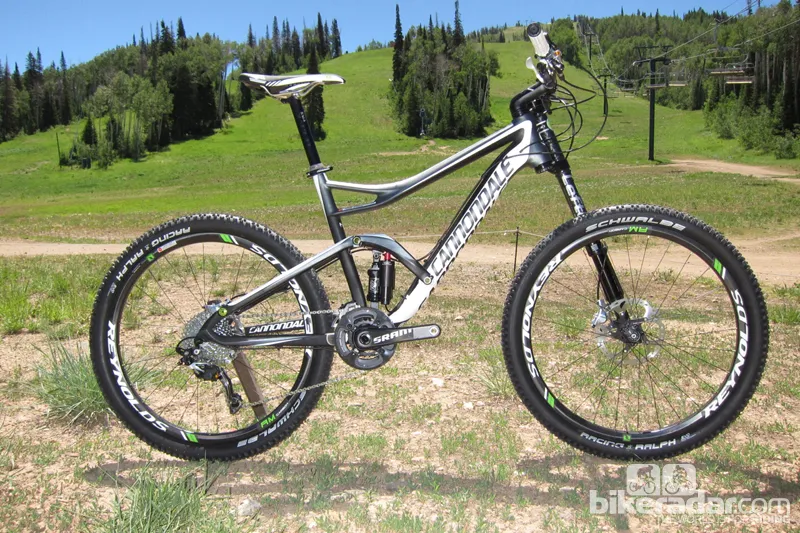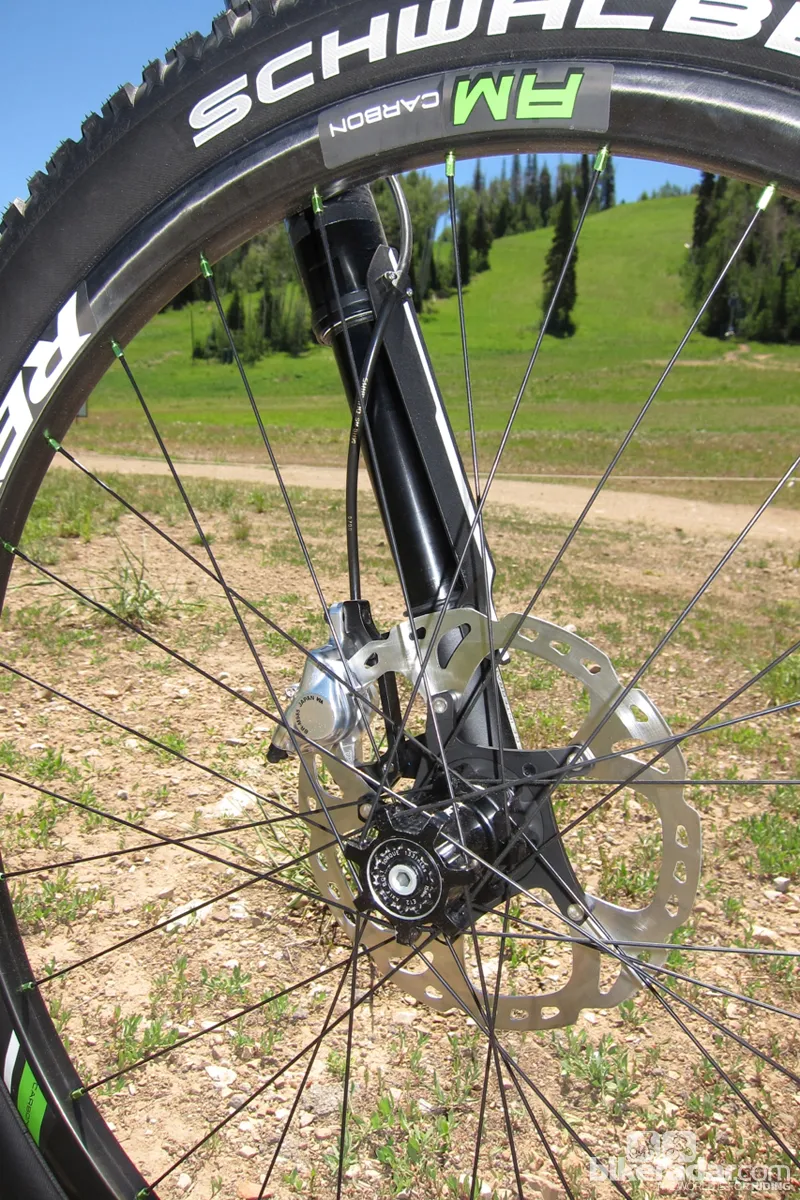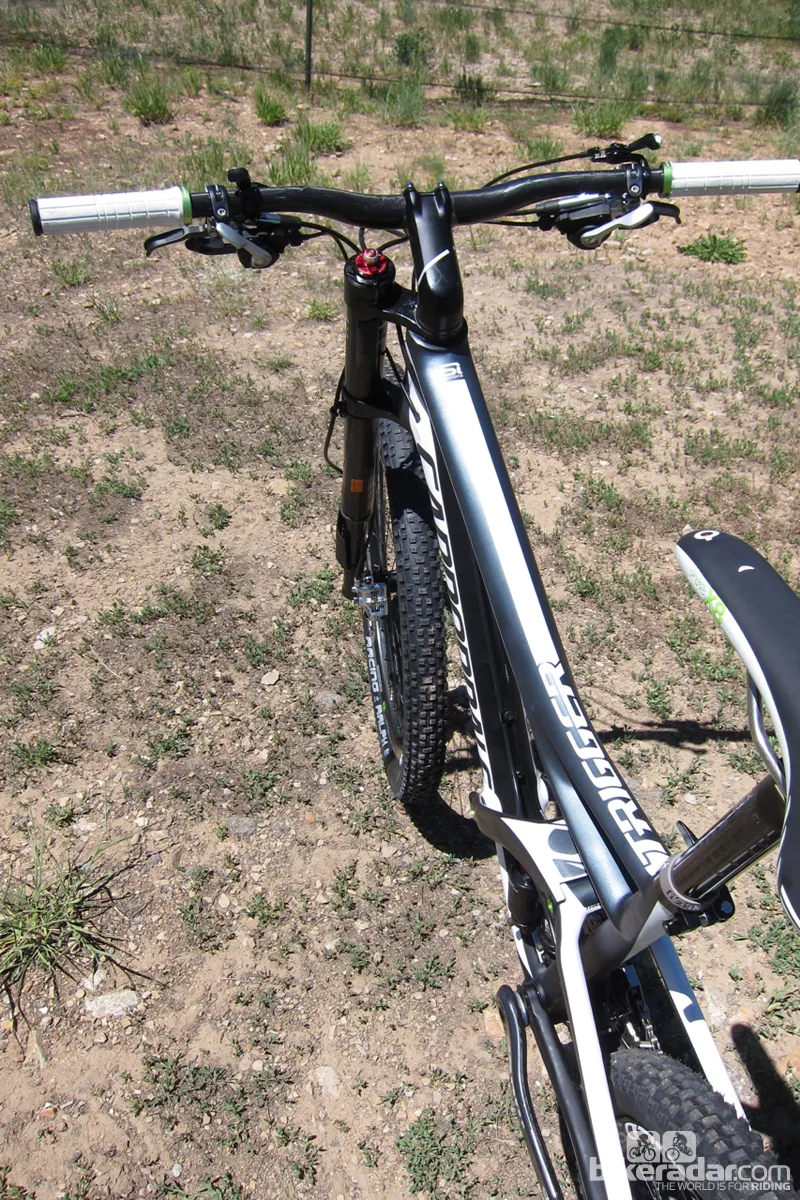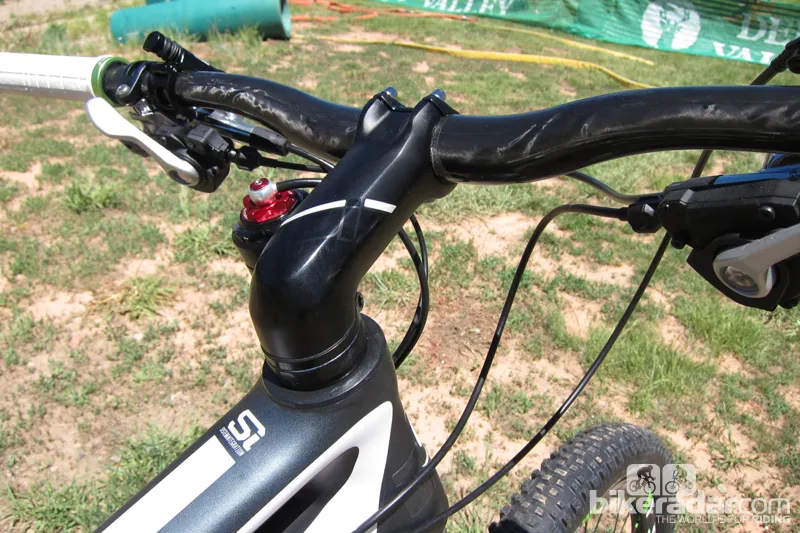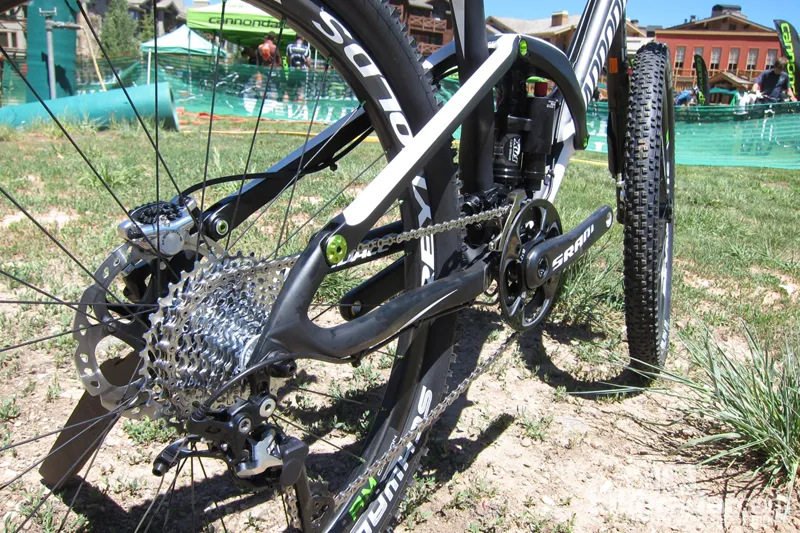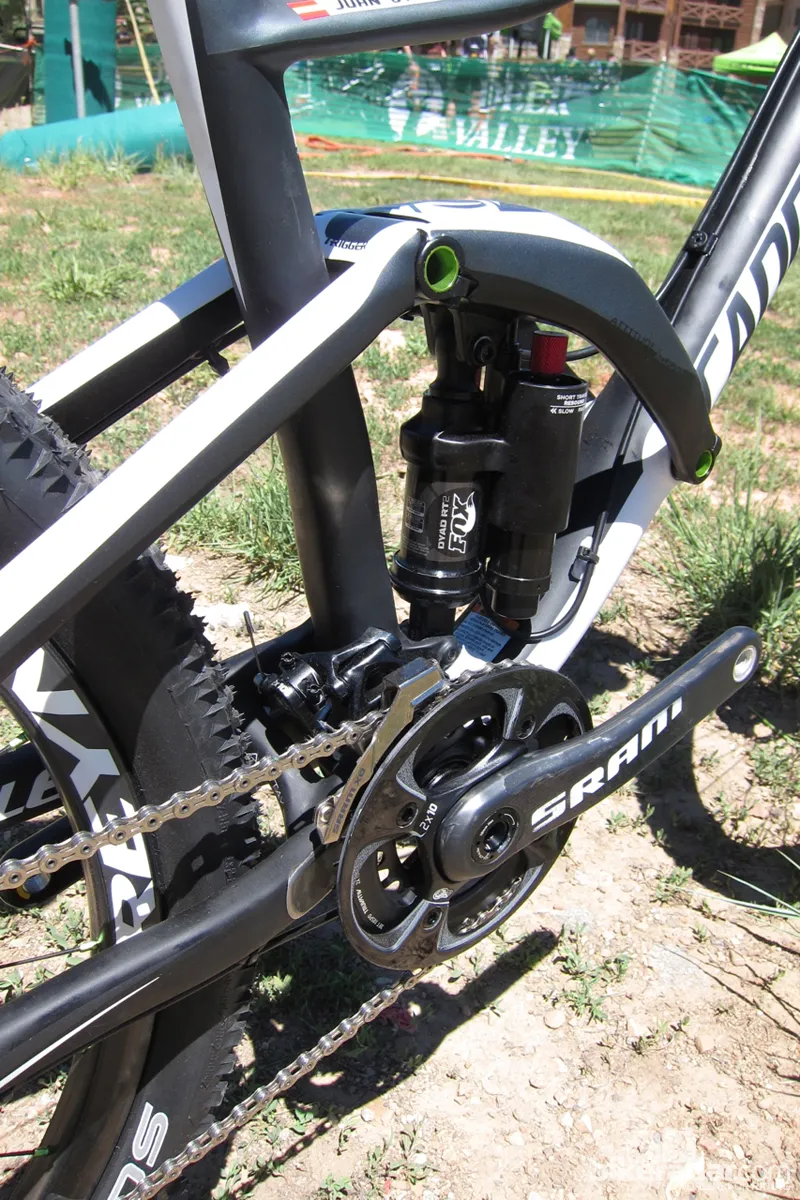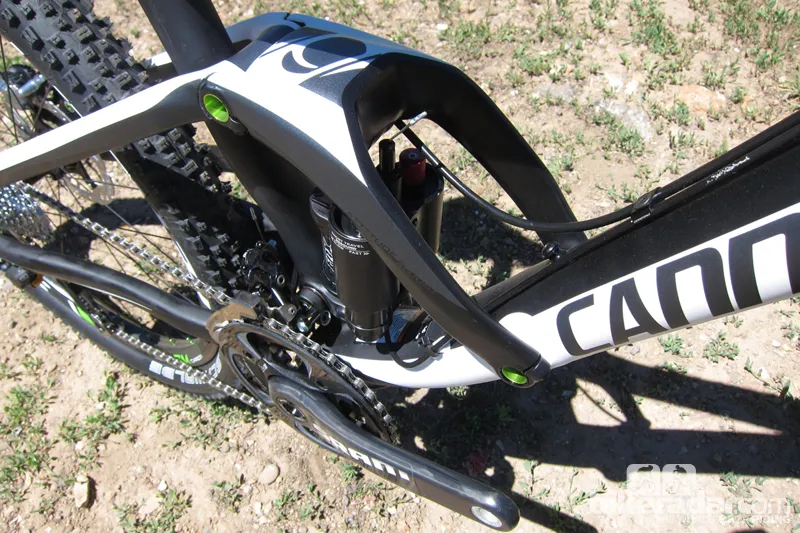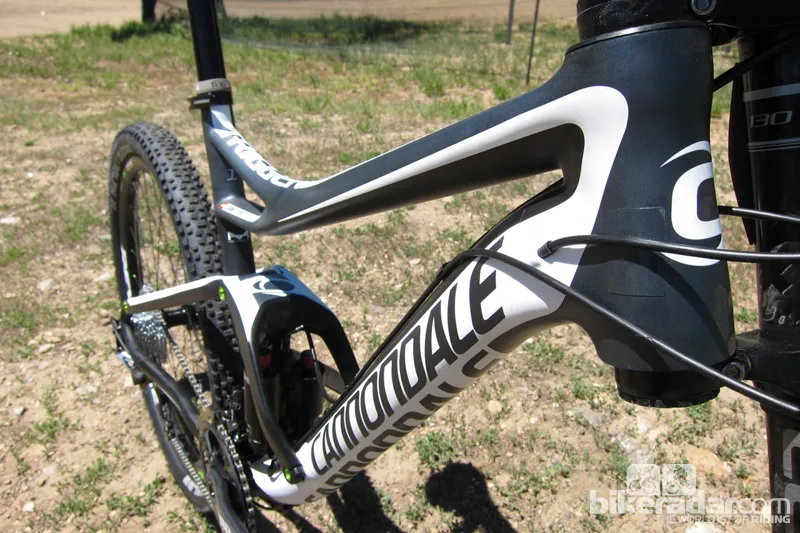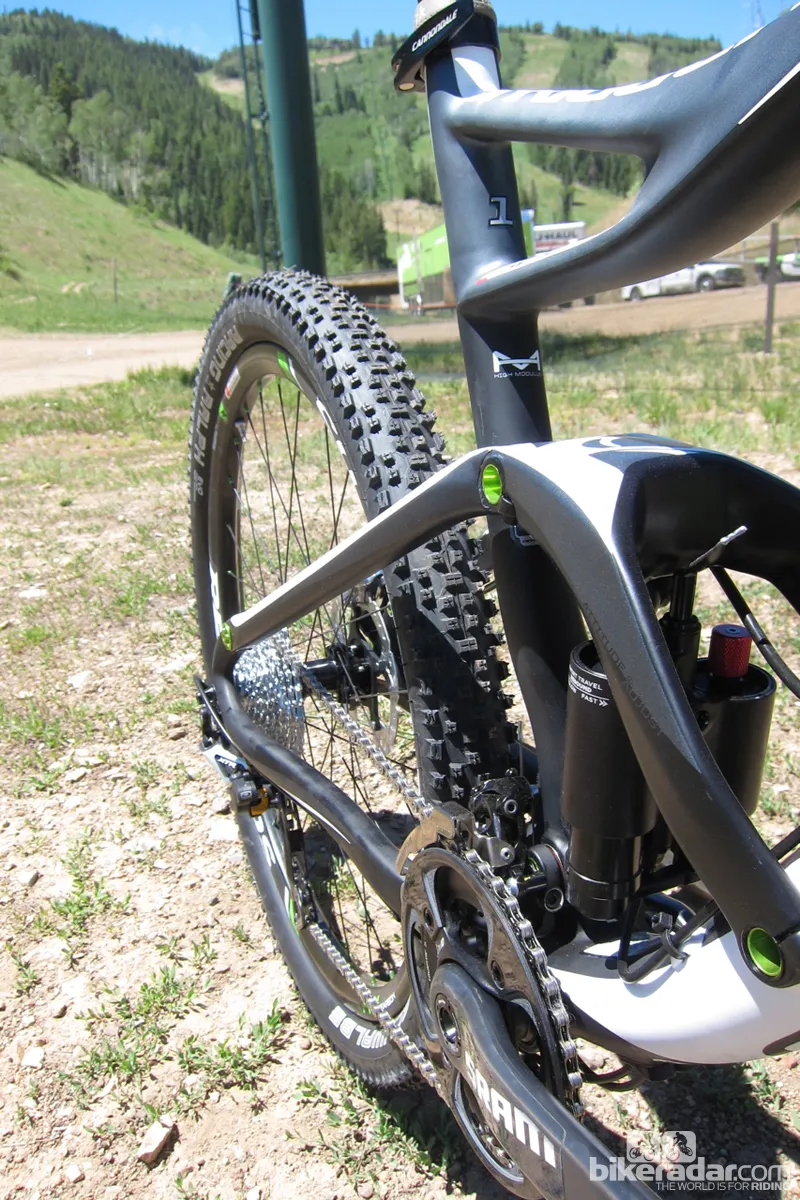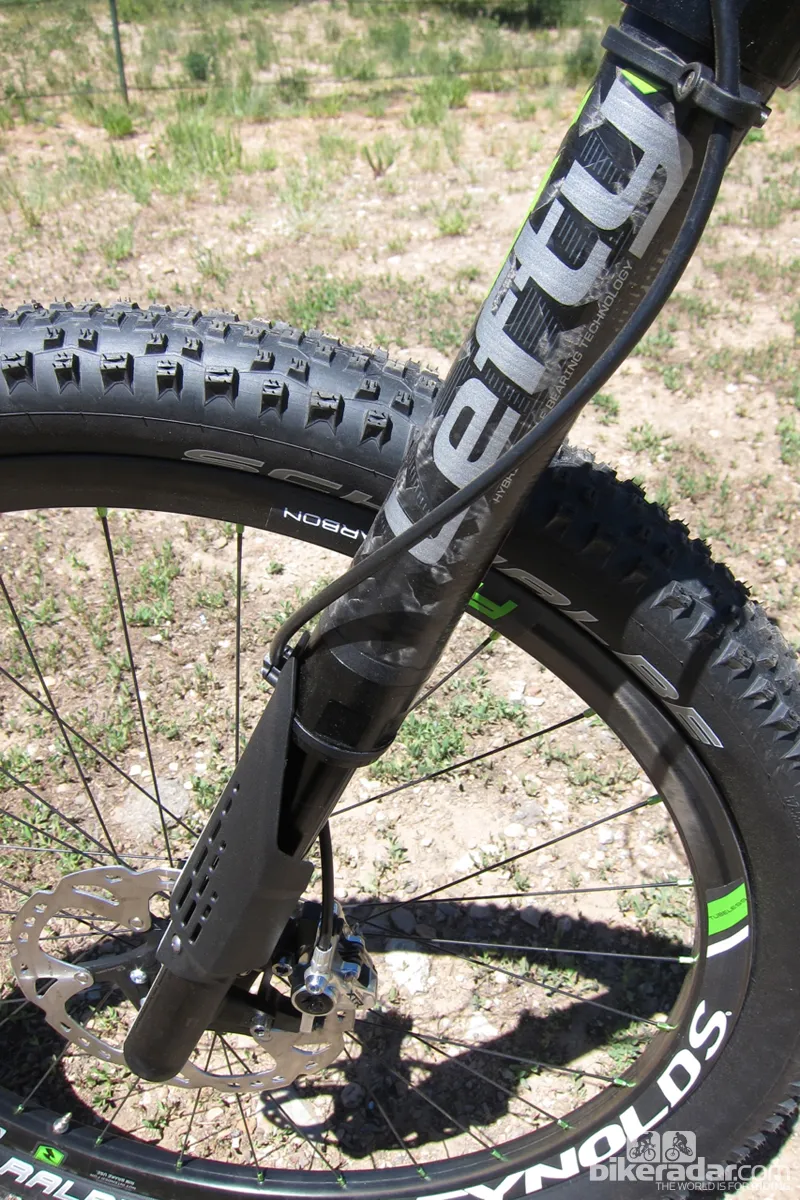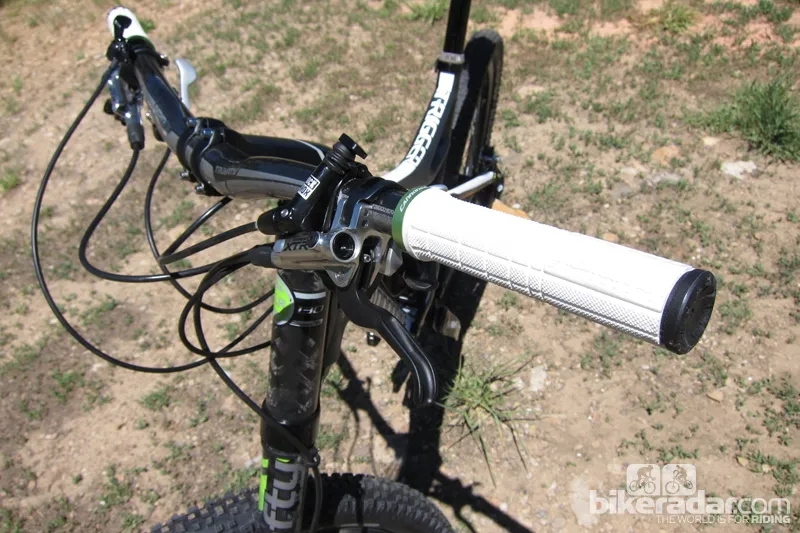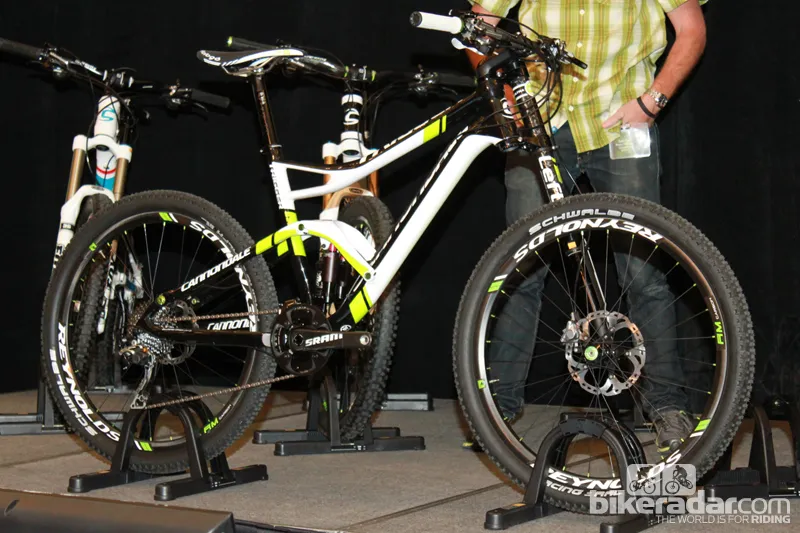Cannondale new 2013 mountain model, called Trigger, complete their Over Mountain line of dual-personality, dual-travel bikes. The 120mm travel bike joins Jekyll (150mm) and Claymore (180mm) and fills the role Cannondale call "cross mountain." At a time when seemingly all new bikes, under 120mm travel, launched are 29ers, Trigger notably comes with 26in wheels.
The new bike, which sports a BallisTec carbon frame, serves to fill a hole in Cannondale’s Over Mountain line, but we couldn’t help coming away feeling that Cannondale spec’d the wrong wheel size for the bike’s intended purpose. “What we’ve decided to do for Over Mountain is to make a line up of 26in bikes,” said Johannes Huseby, Cannondale’s global product director for mountain bikes. “We look to Europe a lot in terms of new product, because, right now, Europe makes up the majority of our mountain bike sales. I’m not saying I don’t want to grow rapidly in the US, but it’s been a big hole for us — the 120-130mm category — so we’ve had great success with Jekyll and Claymore in Europe, but the biggest category in Europe is still that 120-130 category."
Huseby also said Cannondale have something up their sleeves for later in the year, though.
Trigger: an endurance trail bike
Trigger is aimed at both the reformed cross-country racing crew, and those still racing with very contemporary outlooks on suspension — i.e. marathon and other long-distance racers. It’s simply a 120mm trail bike with Cannondale’s Over Mountain feature set.
The Trigger shares all of its features with Cannondale’s other two Over Mountain bikes — Jekyll and Claymore — but meters back the travel and sharpens up the angles to suit those who want to pedal all day. Cannondale say that a bike must have four attributes for the Over Mountain line: material (Superformed Alloy or BallisTec carbon), ECS-TC linkage design (wide linkages with 15mm axles and captured bearing oriented at the frame that give the bike its ‘center-stiffness’) a Fox-made Dyad RT2 pull shock with a dual-chamber, dual-travel personality, and the remote actuator that runs it.
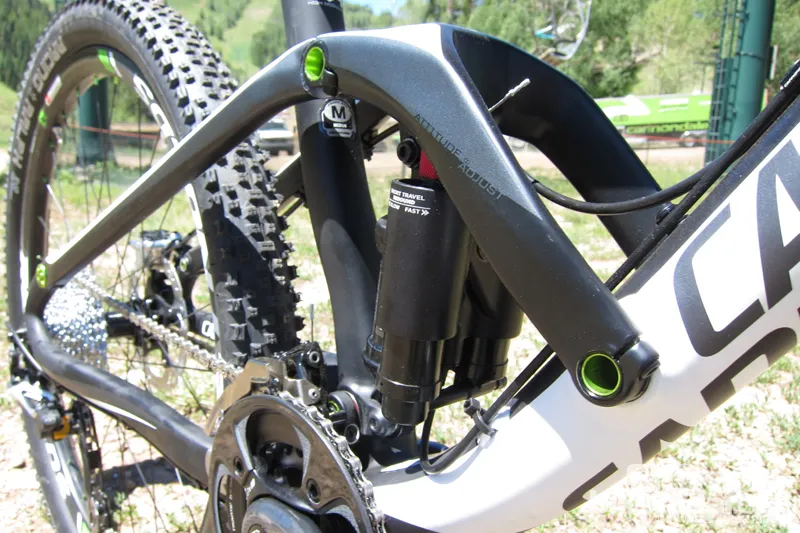
The wide carbon shock link clamps to 15mm aluminum axles, which rotate on bearings press fit to the frame
The Trigger toggles between 70mm for its Elevate mode, and 120mm in Flow.
The shock works by closing off the smaller chamber with a spool valve for the ‘Elevate’ mode, so that the shock operates off the one larger chamber. This increases spring rate, and keeps the bike high in the travel, and changes the geometry to keep the bike’s bottom bracket higher and head angle steeper. When switched to ‘Flow’ mode, the Dyad utilizes both chambers for a higher-volume tune, and more linear spring curve. In Flow, the Over Mountain bikes gain 40 percent more sag, which also changes the bikes' dynamic geometry. Cannondale use a pull shock because, they say, push shocks puts more stress on the bushings in the shock, which in turn creates more friction that leads to stiction (less sensitivity) and more wear on the parts.
The bike shares the BallisTec carbon construction with the carbon Jekyll models, which use fiber developed for ballistic armoring. Cannondale use the special carbon to construct the foundation of the frame, and then tune the ride with the ‘strategic use of high modulus fibers,’ according to Peter Denk, Cannondale’s director of technology. “When you have a tube from us [made this way] you can take a hammer and smash a hammer on it," Denk said. "In real world riding a carbon fiber frame, which is well made and has the correct dressing and very high impact fibers, actually is a lot stronger and better for trail abuse than steel or aluminum."
Trigger’s fork: a new Lefty
The Trigger platform serves to launch Cannondale’s latest Lefty fork as well. Drew Hanna Cannondale’s Lefty product manager called this revision of Lefty the most significant innovation since the fork was introduced.
That significant change is the incorporation of a lower slide bearing — Cannondale’s term for a bushing — and a wiper seal. Cannondale are calling the entire system a Hybrid Needle bearing design, since they’re still using needle bearings (sliding on the four faced upper part of the stanchion) as the upper and main method of stabilizing the fork.
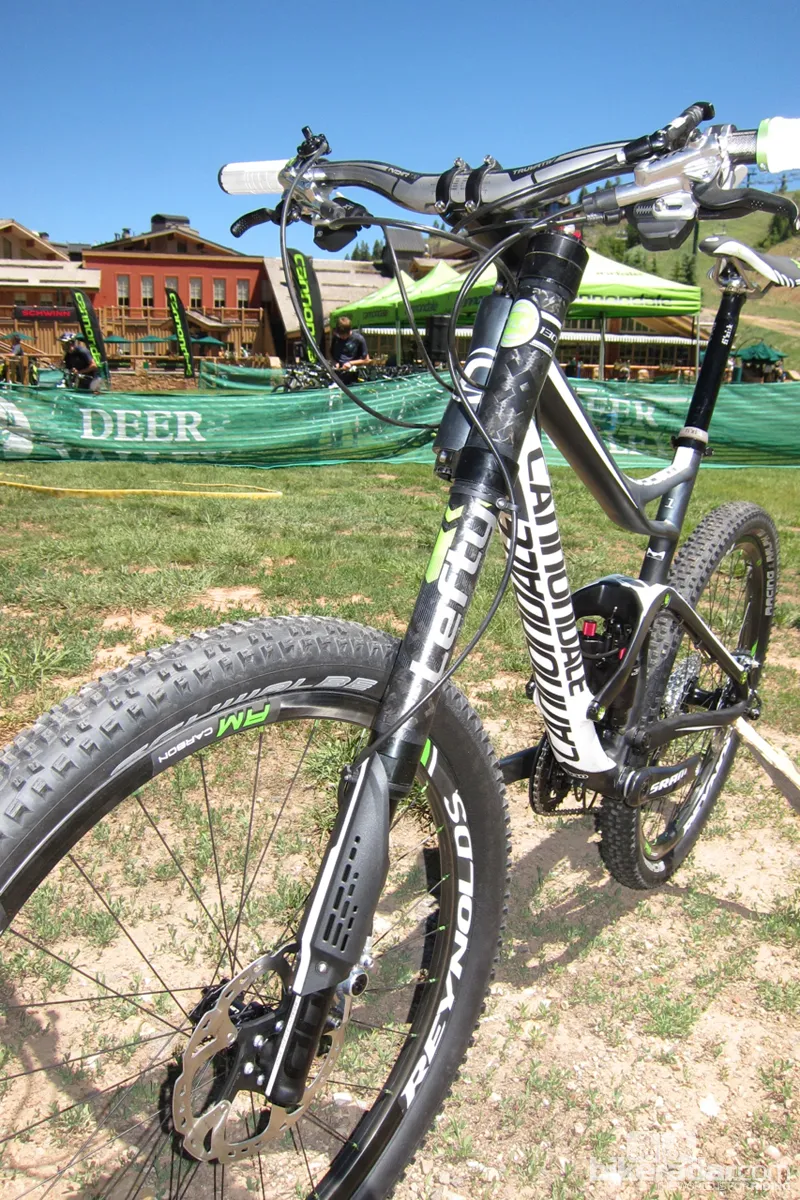
Lefty now uses a moto-style shroud to protect the leg from rocks and debris
With this design change, Cannondale say they have made the new fork stiffer than the previous, lightened it, but most importantly eliminated the need for the lower shock boot. Since the lower stachion is open, it also allows use of an O-ring to help visually set sag.
Cannondale will offer three levels of Lefty for 2013: Lefty PBR, Lefty XLR and Lefty Carbon XLR. The first two models share the same chassis made up of OPI 3D forged upper and lower tubes, and vary by damper.
The PBR fork offers a top of fork push button lockout damper with a blow-off that they’re calling the ‘pop-top’ piston. Lefty XLR uses a similar damper, but is outfitted with a RockShox X-Loc hydraulic remote. Finally the Lefty Carbon XLR trades the upper OPI forging for a filament wound carbon tube with bonded alloy clamps, a design that saves 100g from the middle model. The Trigger models usher the new Lefty into the Over Mountain category, with the use of a Lefty Carbon XLR, Lefty XLR, and PBR models that sport 130mm of travel.
2013 Trigger models
Cannondale will offer three trigger models, but only two will be available in the US. The Trigger Ultimate, is Cannondale’s most exotic model and comes spec’d with the manufacturer’s own Lefty Carbon XLR Hollowgram SI SL crank, a SRAM XX drivetrain, with X0 brakes and Enve Composites XC tubeless wheelset. This model is only available in Europe.
The Trigger 1 will be available in the US and comes with the Lefty Carbon XLR, SRAM S900 double crank with 38/24-tooth rings, Shimano XT shifters paired to an XTR Shadow Plus rear derailleur and XTR Trail brake. Cannondale also spec carbon wheels on the Trigger 1 in the form of Reynolds new carbon mountain wheelset, which will carry a two-year, 'no questions asked' warranty. Trigger 1 costs US$6,999.99.
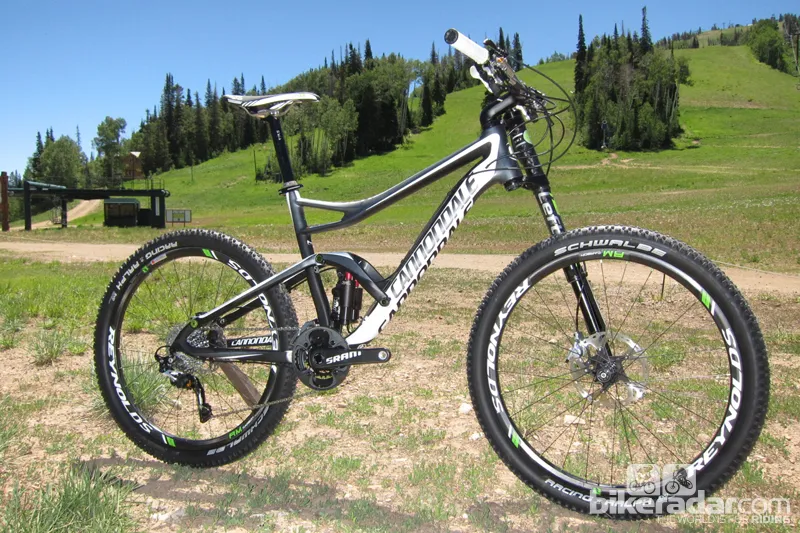
Trigger 1
Trigger 2 employs the PBR damper in its 130mm Lefty fork. Cannondale spec SRAM’s X9 drivetrain, including the new Type 2 clutch-style rear derailleur, and finish the build with Magura’s MT2 brake with BAT pad contact adjustment. The base model Trigger also trades the dual-personality Dyad RT2 rear shock for a single chambered, single travel mode shock from X-Fusion called the P1RL. Trigger 2 is priced at $4,999.99.
Stay tuned to BikeRadar for a look at highlights from the rest of the Over Mountain line as well as a deeper dive into the new Lefty and Cannondale’s 2013 road and cyclo-cross models.
